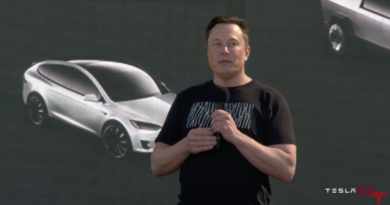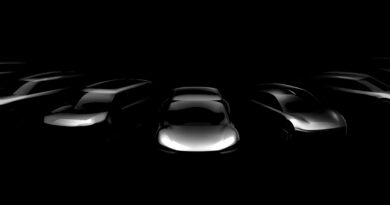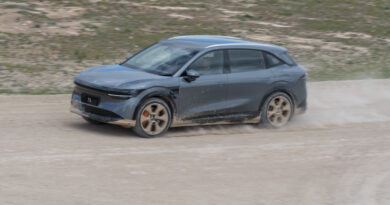Why can’t electric vehicles be sexy?
Do all electric cars have to look ugly, or just dull, smooth-egg like and boring?
I’d like you to name me one genuinely attractive, visually heart-racing EV?
Please.
I’ll wait.
No, do go on.
Okay, I’ll grant you the BMW iX does defy the “boring” description, but attractive? Only if you like your humans as Picasso perceived them.
A Tesla might be a great car, many people tell me so, but is it good to look at? I’d rate it equal in sex appeal to Elon Musk before he discovered hair replacement, expensive clothes and swagger.

The obvious outlier is the Porsche Taycan, which, if you approach it from the rear only, as if you’re sneaking up on its looks, does have a mighty fine rear end, but the overall design is simply too bulky, too droopy, too little like the light, lithe looks we’re used to from Porsche.
I’m going to draw a line through all the Chinese EVs and step over to the Kia and Hyundai section where I will grant you the EV6 and its close relative the Ioniq 5 are eye catching. But pretty? Pretty unusual, perhaps.
My guess is that something fell on the clay models of these cars – possibly a house brick – and the designers, in a fit of madness, went “hannnng on, squashing an SUV looks cool!”
Now, I’m going to do the rarest of things and say that I might not be completely right, because I do like the look of the Genesis GV60, but I’m reliably informed by other people that that’s just me.
Mercedes has made some EVs, but they look like rounded off versions of proper Benzes, with droopy corners, like tissue boxes that have been attacked by an angry dog.
At least they’re not boring, though, as the company’s design boss Gordon Wagener recently pointed out as he opined that EVs “all look alike”.
“Even I, as an expert in design, when we put them in our [design] presentations, I cannot tell the difference,” he scathed.
“They are all fastback, they have similar faces, whatever. I think that we will make a difference with our iconic [design] and that will set us apart from that sea of sameness.”
But what about Polestar, I hear the quirky guy down the back with the thick black-rimmed glasses and spiky grey hair asking. Well, Pete Allen, Polestar’s Deputy Chief Technical Officer and Head of UK R&D, does at least have the answer to all this uninspiring EV design.
Allen explains that our obsession with range anxiety, and reducing it by increasing EV range, is the problem. There are two main ways to increase your range between charges, the first being the size of the battery, while the second is aerodynamics, and that means cars with invisible door handles and no sharp, sexy edges (low rolling-resistance tyres are another feature, but they also compromise the dynamics of your EV – boo).
“If you want maximum range, then you have to have a very bulbous kind of front end, because most of the aero drag is coming from the front of the car,” Allen says.
“So if you have very low drag, then you end up with a big, plain shape. Others do that, they take that approach. So then the question is, how do you balance the range attributes with the desirability of the design and the driving dynamics?
“Polestar is not about out-and-out maximum range.”
So, basically Allen is saying he’d rather have an attractive car that’s good to drive than one that can do 1000km off a charge. A sensible limit, he believes, will be reached with the UK-designed Polestar 5, which is expected to be fitted with a 100kWh battery that delivers well in excess of 600km in driving range.
So does that mean the Polestar 5 will be attractive, unlike the very plain if not unpleasant Polestar 2? Not from the pictures I’ve seen, but there is some hope for the sportier, sexier direction the company is heading in with Polestar 6.
I’ll believe it when I see it. For now, unbelievably, the best looking EV in the world costs $1 million. The Rolls-Royce Spectre, and even that only wins because it just looks like a Rolls.
Years ago, at the launch of the Jaguar I-Pace, design genius Ian Callum told me that EVs would herald the biggest shake up of car design in a century and that we’d see some amazing and super-cool vehicles very soon. I’m still waiting.



